Does this sound like you?
You’ve been a freelance food photographer for a few years now, servicing small clients mostly, and now you are looking at how you can get to that next level.
Editorial and commercial work, with larger budgets and teams. You know the clients you want to work with, but you aren’t sure what they are looking for.
Having your portfolio reviewed by top agencies, reps and the Creative & Photo Directors of magazines is the way to understand what your portfolio must have.
Here are 9 tips I learned from having my food photography portfolio professionally reviewed at the Palm Springs Photo Festival.
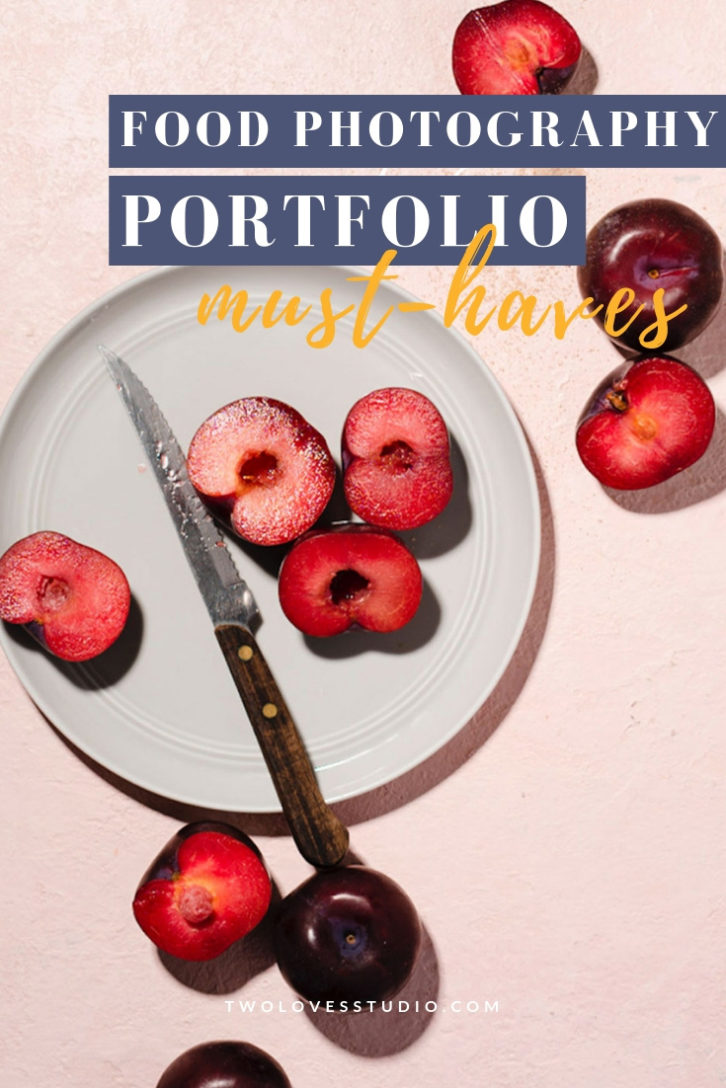
What do They Look For in a Photographer? A Problem Solver.
Of course the images you shoot matters, but at that next level the clients and decision makers are looking at your food photography portfolio to tell them more than that.
In your body of work, clients are looking to see if you can problem solve.
Photography is all about problem solving. Solving for how to get the right light, a certain mood, overcoming the problems of the physics of photography.
DoF and the Inverse Square Law are two of those types of things.
Clients will seek out photographers who can execute their vision. Not only does that come down to style, but they are looking to find a photographer who can problem solve to get results.
This is something that comes with time. Shooting a lot of subjects (inside and outside your niche), and facing a lot of problems and finding their work-around.
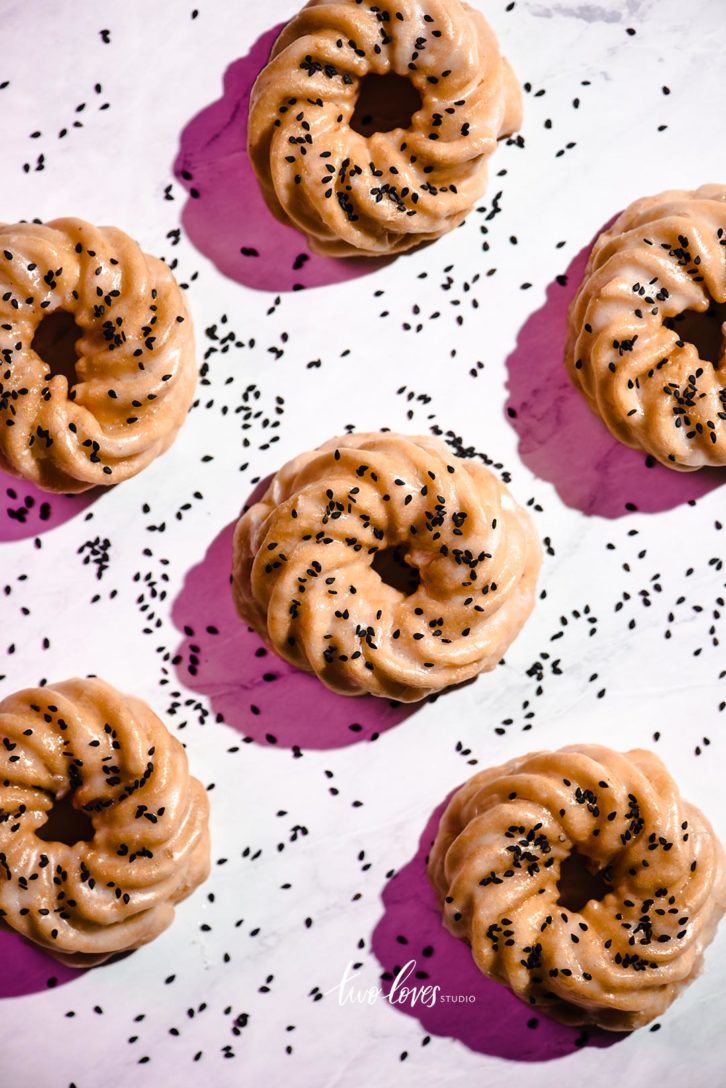
They Want to See How You Use Light.
Photography is painting with light.
It’s the primary job of the photographer to craft and shape light. On larger productions, there might be a team who handles creating and setting up light, but it’s the job of the photographer to create that vision.
To request changes and find the right settings to ensure light and mood match the concept.
So it’s safe to say that clients at this level want to see a variety of moods and lighting types. Both natural, artificial, light and moody, hard and soft.
As a food photographer it’s tempting to create images of the most beautiful food possible. But working with large magazines, the food stylist will be the one responsible for that. Therefore our job is to create the most beautiful light possible.
Having a panel of reviewers comment on how strong your lighting is, is the most special compliment you can receive.
Check out my most recent food photography portfolio.
Your Food Photography Portfolio Must Show You Can Work in a Team.
Larger campaigns often involve creative teams. The people on those teams can be small or large, but regardless you still have to work as a team with the Creative Director.
Agencies and reps want to see that you’ve worked in teams. How do they do that just by looking at an image? Experience.
They can tell when you work with different stylists, both prop and food, as you’ll have a vast array of images. Plus part of the review is talking about your work. Sharing creative teams and directions is part of that process.
Working with teams are some of the most valuable skills you can acquire.
Imagine two strong creatives who are amazing at two different skills coming together. It leads to the creation of something amazing. Experience working with a team is a really sellable skill.
Photographers are also the ones who are often put in charge of teams on set. Confidence to lead a team is crucial at that next stage.
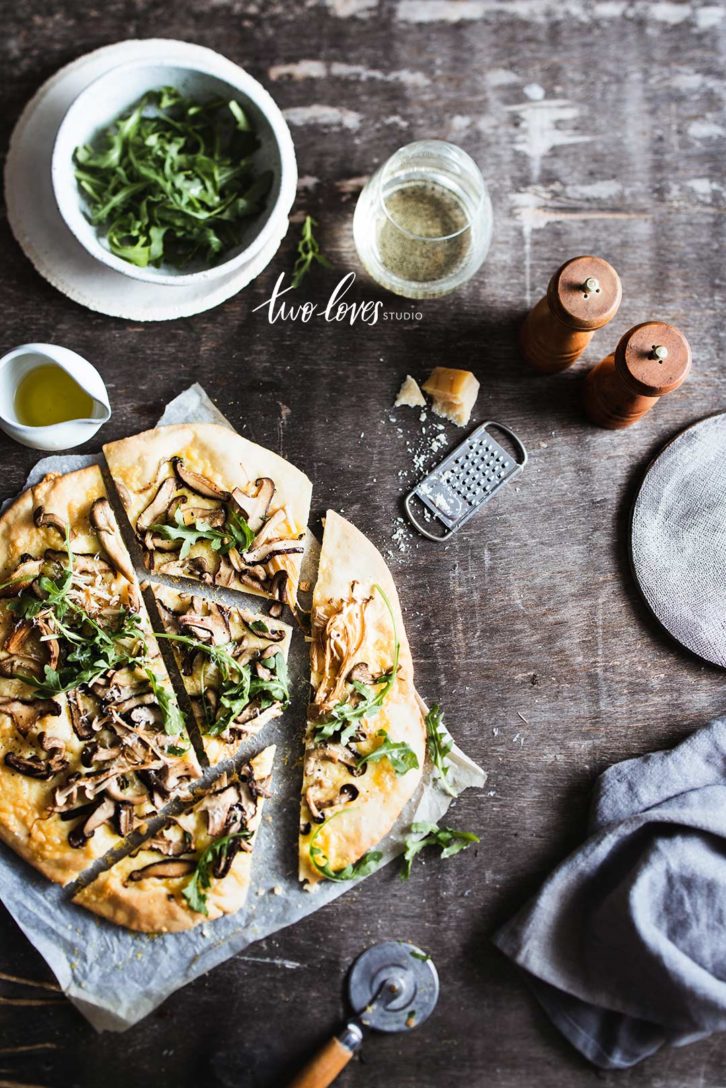
Something Must Stand Out For You to be Memorable.
How do you stand out in a crowed market? It’s the million dollar question.
Since attending the photo festival, I understand just how busy these people are.
They see hundreds of photographers. We have a split second to catch their attention and make us memorable. But it only takes one image to catch their attention and get clients to spend more time exploring our work.
I learned this was different for everyone. And you can’t cater to every personal preference. My biggest takeaway was that you have to trust your gut, be yourself and explore.
Don’t settle with good images. You have to push your boundaries. Don’t copy what every other person is doing on IG, the white curated feed isn’t going to catch these people’s attention.
Some of their favourite shots of mine didn’t get the most likes on IG. Likes don’t lead to these people hiring you. Pushing your limits and always exploring and learning does.
If you feel comfortable with where your work is at right now, then it’s time to start exploring something you’ve never done.
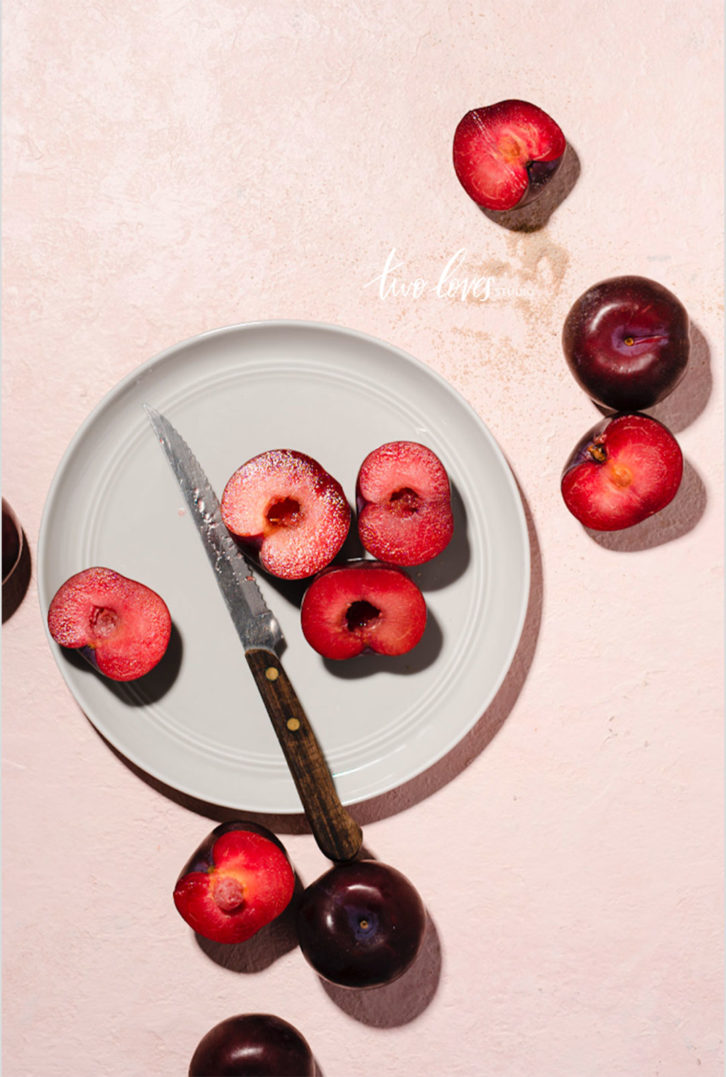
Story-telling is a Must.
Why does everyone love photography? Because a picture tells a thousand words. We are telling our clients stories through our imagery.
Your food photography portfolio has to show story-telling.
They loved the sets that I have been creating. I tend to update my portfolio with new work, and sometimes I forget to include the entire set that creates a story.
It’s something I have been doing on Behance, so incorporating this into my food photography portfolio will make it stronger.
Including a larger volume of work that tells one story shows your judgement as a photographer. Clients was to see discerning photographers.
Anyone with a camera can take 200 images. Capturing a strong story in 3 is why clients turn to professional photographers.
Including travel food stories, interiors, details in restaurants can be that. People and food, farm to table…there are so many stories we can be telling.
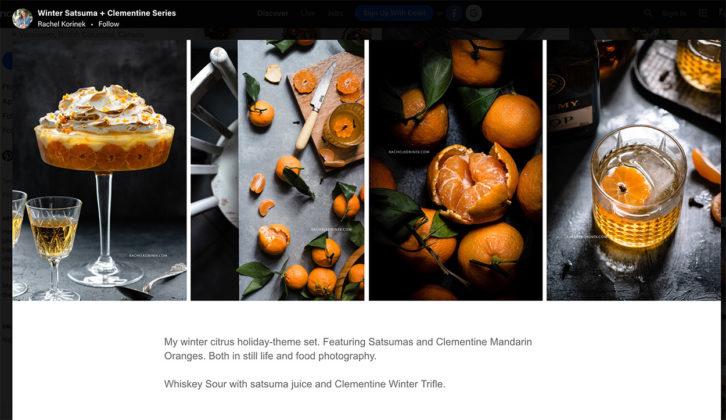
Include Food Scenes, Portraits + Macro Shots.
Variety is the name of the game. Not only because you can demonstrate that you can tackle a range of subjects, but it comes down to showing two things.
Firstly, again, that you’re a problem solver and secondly that you can tell stories.
All of these types of shots could be required in one job to tell a larger story.
Our portfolios have to show larger food scenes, atmosphere and environmental elements. They need to show food portraits (which is what I love to shoot the most), and up close macro shots.
You can think of it as wide, tight and tighter. From watching people go through your portfolio, this was also crucial as it helped break up the images and give the reviewers a break.
When I say break, I mean a break from the same 3 by 3 by 3 by 3 images as they scroll through your food photography portfolio. It helps them take in the individual photos.
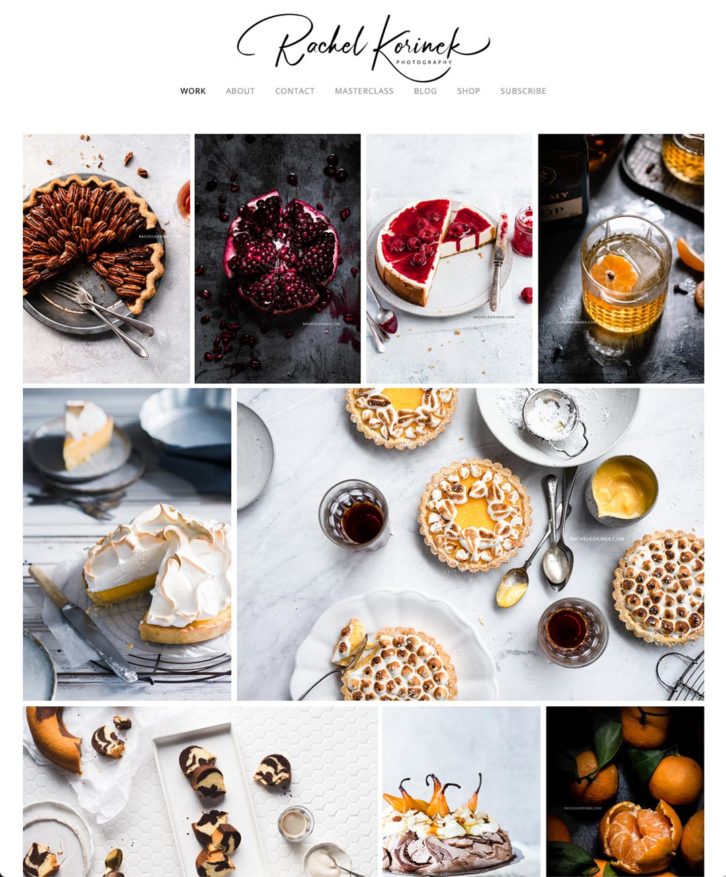
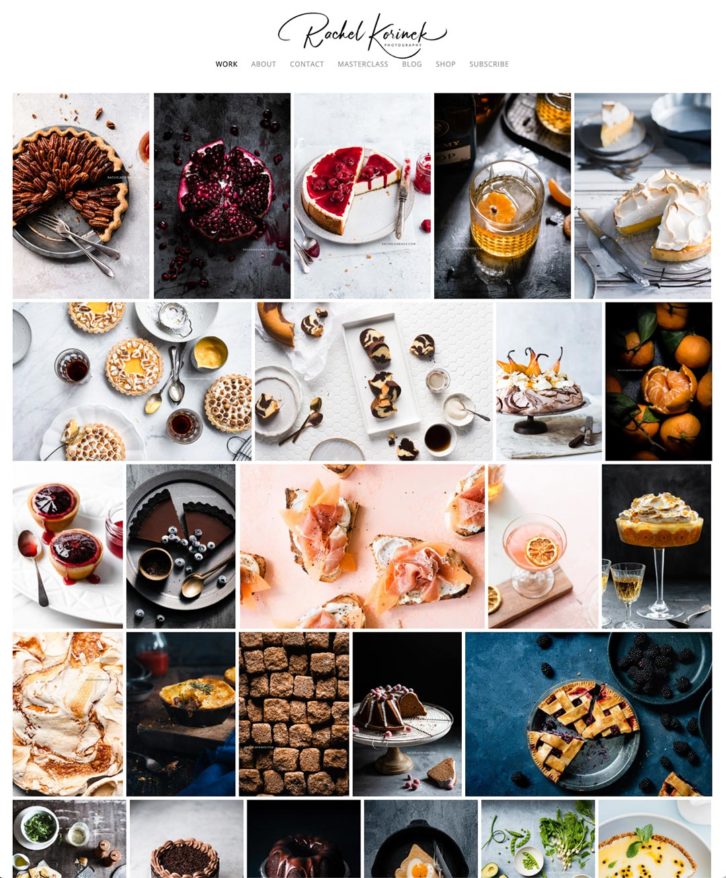
Take a moment to see how these two different ways of presenting a portfolio allows you to connect with the images.
Does the one with more images per line make you less or more connected?
Pagination + Layout Matters.
This point is really a flow on from what types of food photos to shoot.
Pagination is the fancy term for how you arrange images in your portfolio. So which images follows each other to tell a larger story of you as the photographer.
It’s complicated, and each reviewer will have their own preference. But how you layout your food photography portfolio both online and in print can make or break your images.
Following some kind of flow with your work can help it send a message. Things like following a colour story, mood story or subject exploration can be ways of creating layout.
As part of reviews, you can request feedback on your pagination to make your work stand out and be the best it can be.
Check out these 12 tips on how to improve your portfolio.
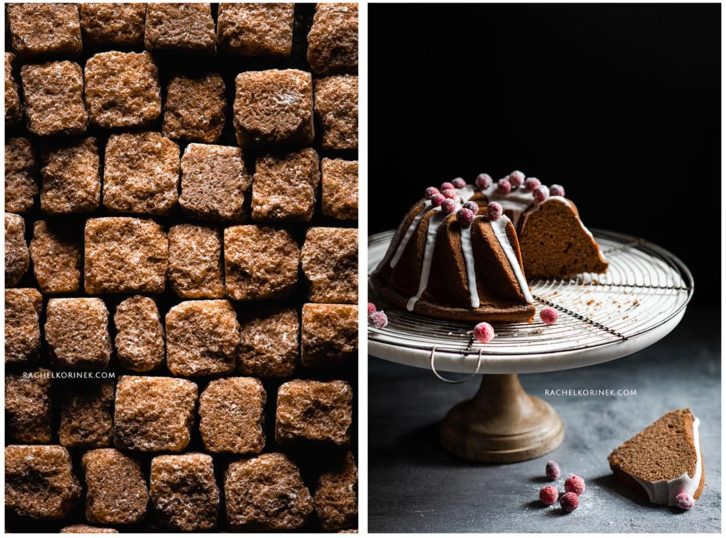
Motion is a Must.
Love it or loath it, motion is fast becoming a must have skill.
This can be a little scary for those of us who have spent what feels like a lifetime developing photography skills.
But this doesn’t have to be full-length video production. Motion can be all types of assets, like GIFs, cinemagraphs or stop motion.
If you aren’t sure where to start, I suggest capturing some GIFs on IG or for your portfolio.
Show Your Personality.
This tip is for your website where you house your portfolio.
Your About Page will be something that clients visit. What they are looking for mostly is first and foremost, where you are located.
They want to know a little bit more about you, because at the end of the day, they will be on the same team as you.
Clients want to see that you’re firstly a real person, and then a nice person. Reading a short bio about you, bio pic included, can help them paint that picture.
When I teach my Food Photography Pro Mastermind, it’s one of the first things I notice from new photographers. Their About Page is incomplete and doesn’t have a bio pic.
Now, you probably came here see what images worked in my food photography portfolio and what didn’t. But that would be a waste of your time.
Because styles change, preferences change. But what doesn’t is these takeaways.
Recap: Food Photography Portfolio
Clients will always be searching for photographers who:
- Problem solve to bring clients vision to life.
- Can harness light. Bright, moody, natural and artificial.
- That you can work as part of a team, and lead a team.
- Have something unique to offer.
- Can tell stories with your images.
- Shoot a range of tablescapes, portraits and up-close shots.
- Can capture motion.
- Is a real person and easy to work with.
I’d love to know what you thought of these points. Are they something you’ve actively thought about in your food photography portfolio? Let me know in the comments below.

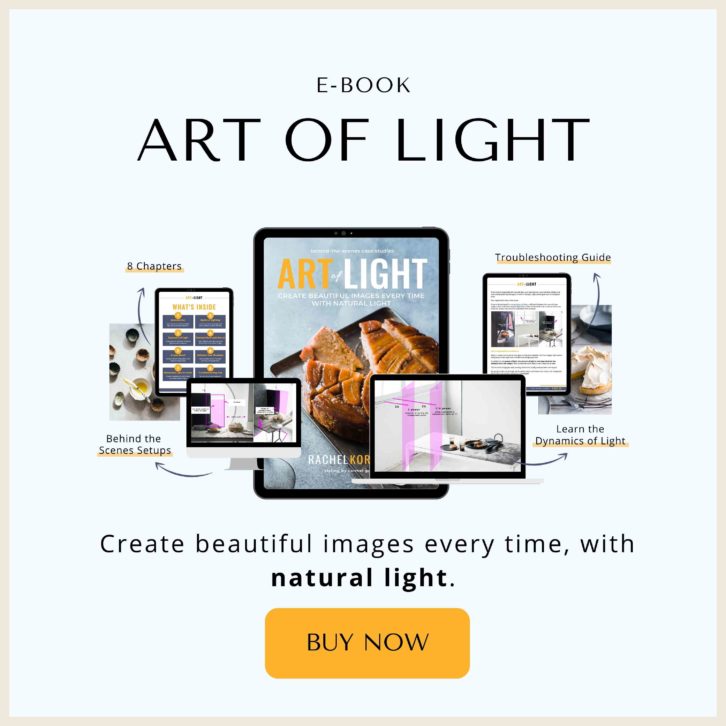


Tina Dawson
Rachel, you are an absolute angel for spending the time (and money) to share such incredible insights with us. I thoroughly enjoyed following your Instagram stories from the PS Photo Festival, and feel like I learnt SO much. Adding this event to my future goals list, and putting all these lessons to use in my own portfolio. Thank you once again for all your efforts to better our community.
Rachel
Hey Tina! Of course, I think it’s so imporant to support each other. I had so many takeaways from the festival, definitely inspiration overload.
Cali
Incredible insights, as always! thank you!
Rachel
Glad you found them helpful Cali!
Christine
I’m excited to hear about the team thing. I recently started reaching out to stylists to get together and do some test shooting. I normally shy away from collaboration because it makes me feel quite vulnerable but I absolutely see the value and am pushing myself to reach out. Thanks for sharing your insights Rachel. Mwah!
Rachel
That’s awesome Christine! Especially at that higher commercial level, it’s what they are looking for. I learn so much from working with stylists too. Hope that works out for you 🙂
Cali
Any insights on how to find local food stylists?
Rachel
Networking is always key. I would make sure to let people know you’re looking to collaborate. Finding them on social media, Behance and Google is always a good place to start. I’ve always found the ones I’ve worked with through other photographers I’ve met in my local area.
Shelly Waldman
I, 100% agree with Rachel, networking is best and telling people what you’re looking for. If you’re in the US, you can check out places like APA and Workbook.com who have lists you can look through. Also look at local magazines and newspapers as they will list who styled it, if there was a stylist for the article.
Johann
Excellent post. I have to re-read it to digest it all, but it definitely has inspired me to take a variety of shots for my portfolio. Thanks!
Rachel
So glad you enjoyed it, Johann! I totally hear you, that’s how I feel about the entire week at the festival.
Tina
Thanks for sharing Rachel! It makes me want to start shooting for my portfolio!! I can clearly see a whole list of pics I want to take… Also good to hear that teaming up is important. As a food stylist I am used to work in a team, but as a photographer I tend to be to shy to get a team together! Need to step out of my comfort zone here!! And I can’t wait till I learn more about story-telling in your workshop with Be a in Utrecht!! How do you represent your printed portfolio? And what do you think is a good amount of images in a portfolio (both digital and printed)? Feeling inspired!!
Rachel
That excites me, Tina! And yes, I am so excited to meet you in person super soon at the workshop with Bea Lubas. There was a lot of conflicting advice about how to best showcase your work. BUT pagination is important whichever way you do it. Mostly you can have either a digital or printed. I think showing some printed work is important as they want to see how your shots print. Most of all, they want to see your work large. So having a small iPad mini as I did isn’t the best.
Suchita Kalele
Such a solid good information here Rachel, thanks for writing it. I am excited but overwhelmed at the same time. So much to learn and do, I need to work on my artificial lighting skills and improve my cinemographs. But better to go forward with the right information.
I wanted to ask you, if you had taken a printed portfolio book with you?
I am not sure if I am ready to invest in a printed book yet.
Rachel
I feel you Suchita! It’s a never-ending process. I felt excited to have an action plan on things to work on when I am shooting next instead of deciding which food I would like to eat lol. I took prints and digital. I really wanted to get feedback on the digital stuff I had before I invested in print as I didn’t know what their suggestions would be. A lot of people said they like to see both. Some were totally fine with seeing it on an iPad or Computer. Just as long as the images could be viewed as large. Not small like on an iPhone.
Asmita
May I see how kind you are to share these gems here! I am going to check out your portfolio and Behance page. Need tips to design my own. Thanks so much!!
Rachel
You’re welcome Asmita!
Vy Tran
Thank you for sharing this! Your insight is invaluable! I definitely need to start exploring things that I’m not good!
Rachel
You’re welcome Vy! We all do, that’s why it’s a journey and is so exciting! But do remember these are the top level commercial jobs so not all clients will be looking for such things. Some smaller magazines definitely want us to be jack of all trades.
Heather Barnes
Love these tips! I know nothing about artificial light and feel that may take years to learn! I’m finding it difficult to show a variety of shots yet keep a consistent theme. I’m too obsessed with my ig feed looking visually pleasing, but I guess a portfolio is ok to have varying colors and styles? I have a few shots I’ve taken in direct sun, but they look like they were shot by another photographer. I would
Never post them on ig, but would that be ok for a portfolio? What site is the best to start with to build one?
Rachel
I think that’s ok Heather, we all have to start from scratch with a new skill. There is nothing wrong is exploring natural light until you’re a master at it. You can still show a range of light manipulation with one type of lighting. From the things I heard at the festival, I would treat your IG as a showcase of your best work. I think it’s important to post your best work on IG, but not get hung up on curating the crap out of it. I treat my portfolio as king, then IG more loosely. This article might be of interest to you: The Instagram Aesthetic is Over.
Therese Bourne
A huge thank you, Rachel, for your incredible generosity in sharing this valuable knowledge. Such great tips. I’ll definitely be looking at my portfolio with fresh eyes now.
Rachel
You’re so welcome Therese, these things are kinda obvious but I didn’t think about them in this way. So fascinating!
Cosette
Wow, thank you so much for sharing Rachel. You are truly a MASTER at photography, lighting and making it look incredible. I am in awe and this was so interesting to read. I am a huge believer of trying all different styles and adding color. I definitely need to continue working and honing in my style but I appreciate you sharing all this information.
xoxo,
Cosette
Rachel
Thank you Cosette! I think that there are always new things to discover and I enjoy learning. So glad to hear you found this interesting. I really tried to read between the lines so as to help everyone with their portfolio. It’s a constant process, and I think that’s exciting 🙂
Katia
??????Thank you for finding time to share it all in so many details. I ve heard of behance, need to check it out. Tips are absolute gold. Choosing inages for portfolio is soooo hard, so many techniques… i went for 1 pager but it made it even garder to arrange images so they show different types of photography but also work together.
Rachel
Yes! I don’t really know if there is a magic number, but for the reviews, they wanted to see about 60. Not that it means you need to have that many in your portfolio. You just want to make sure you can sell your skills. It’s also kinda cool that IG in a way is a mini portfolio that clients can dig into more if they want.
Irina Grigorii
Thanks Rachel! It’s like a breath of fresh air! Very interesting to read your articles. Only new, fresh and useful. Thank !
Rachel
Haha thanks, Irina! I always try to bring a new perspective and something new to write about. I truly appreciate that. Thanks for reading the blog and supporting me.
Florina
So much good info! I’m working on my portfolio at the moment! Do you have any suggestions for a good theme for a portfolio, I really love the one that you’re personally using. I would love something that will showcase big images and preferably with a “blog” option as well.
Rachel Korinek
I use Squarespace Wexley theme currently for my portfolio (at the time of writing this) at rachelkorinek.com. Squarespace is easy to use and a very reasonable price. I am working on my portfolio too at the moment.
Betty
Thank you so much for sharing your inspiration Rachel!
Best Betty from
http://www.mundgefuehl.com
Rachel Korinek
Glad you enjoyed the post!
Audrey Laferriere
These tips are so helpful! Is there a portfolio builder you recommend that allows .gifs to play in a loop?
Rachel Korinek
That is a good one! You should be able to add GIFs to most sites and they play on a loop. The issue I have found is that for quality GIFs they are still crazy large file, which slows down load times. As I use Squarespace I have played with using Vimeo and linking, plus uploading GIFs. What are you using a the moment? Have you found it hard to do this?
Audrey Laferriere
I was shopping around. I found format allows me to upload .gifs but they don’t load very quickly despite following their guidelines. I will have to play in photoshop to reduce the file size